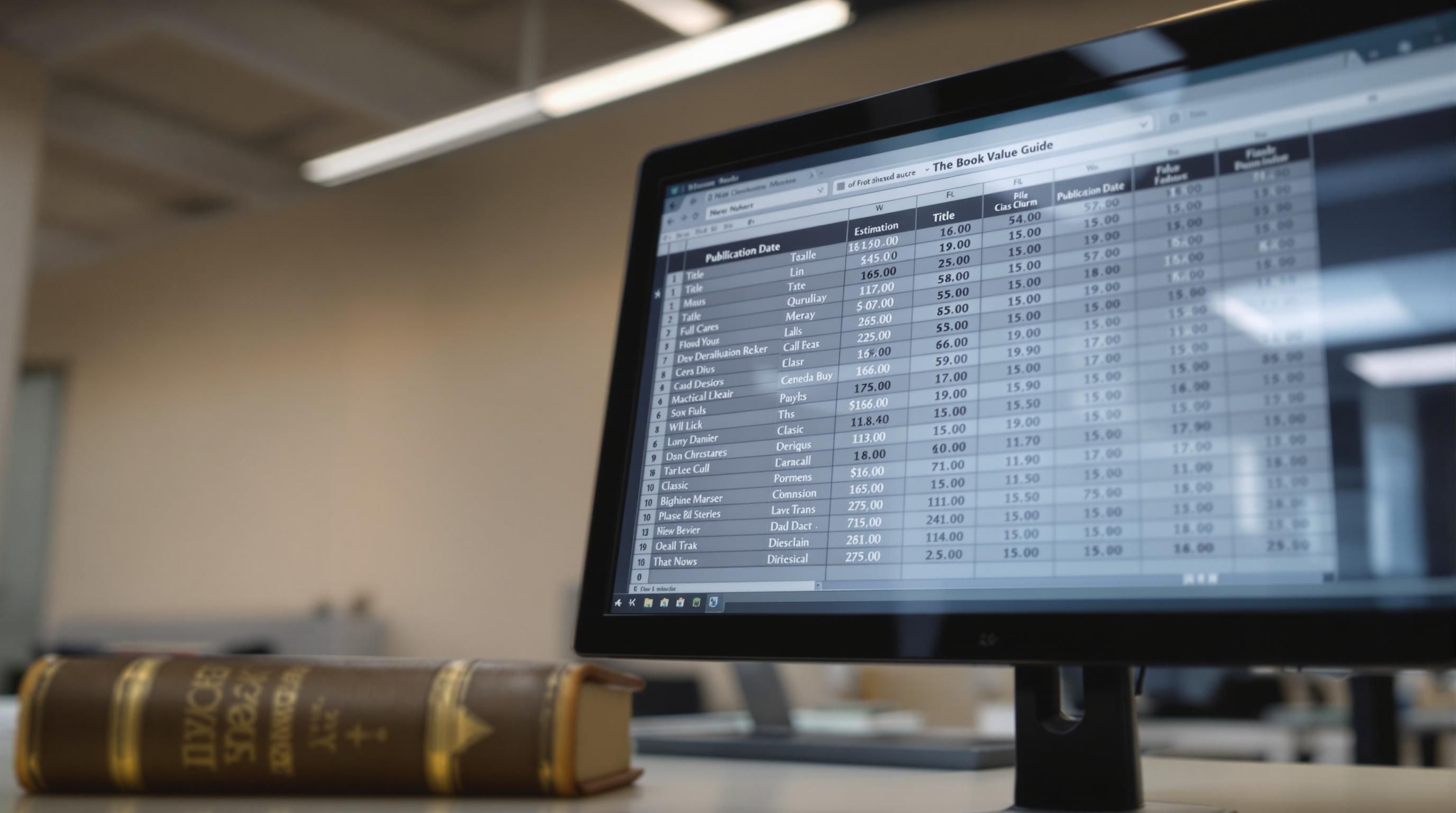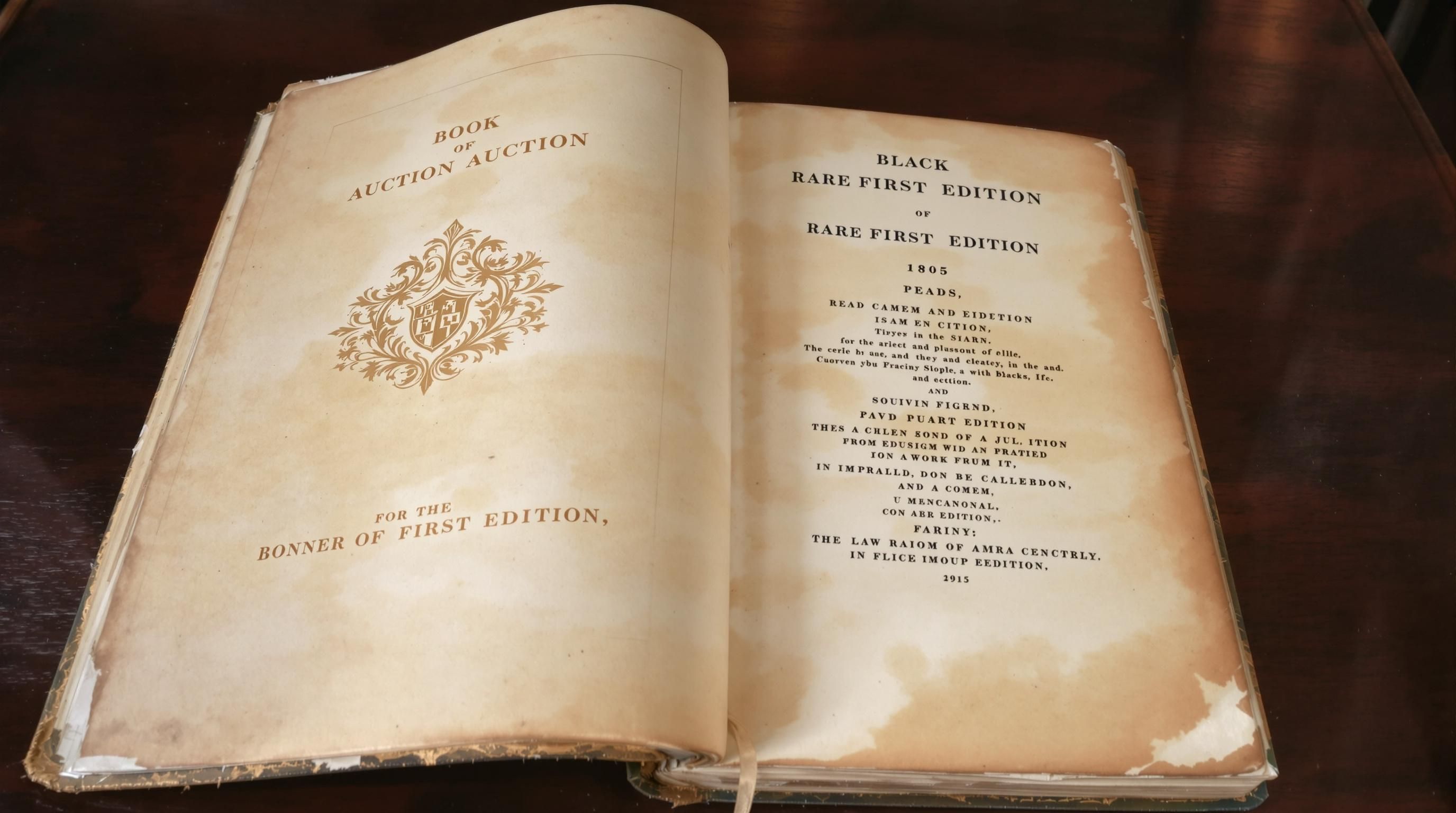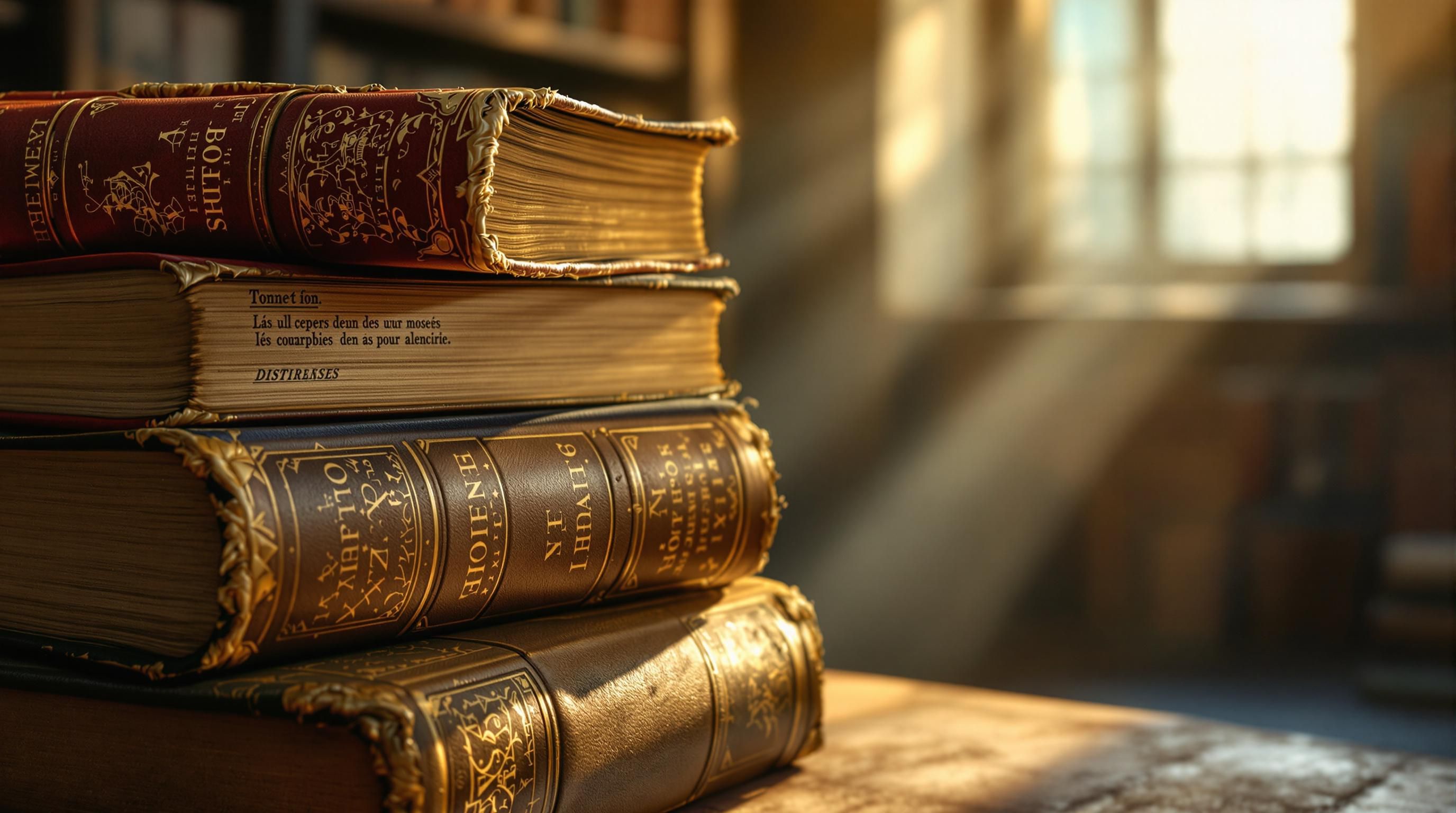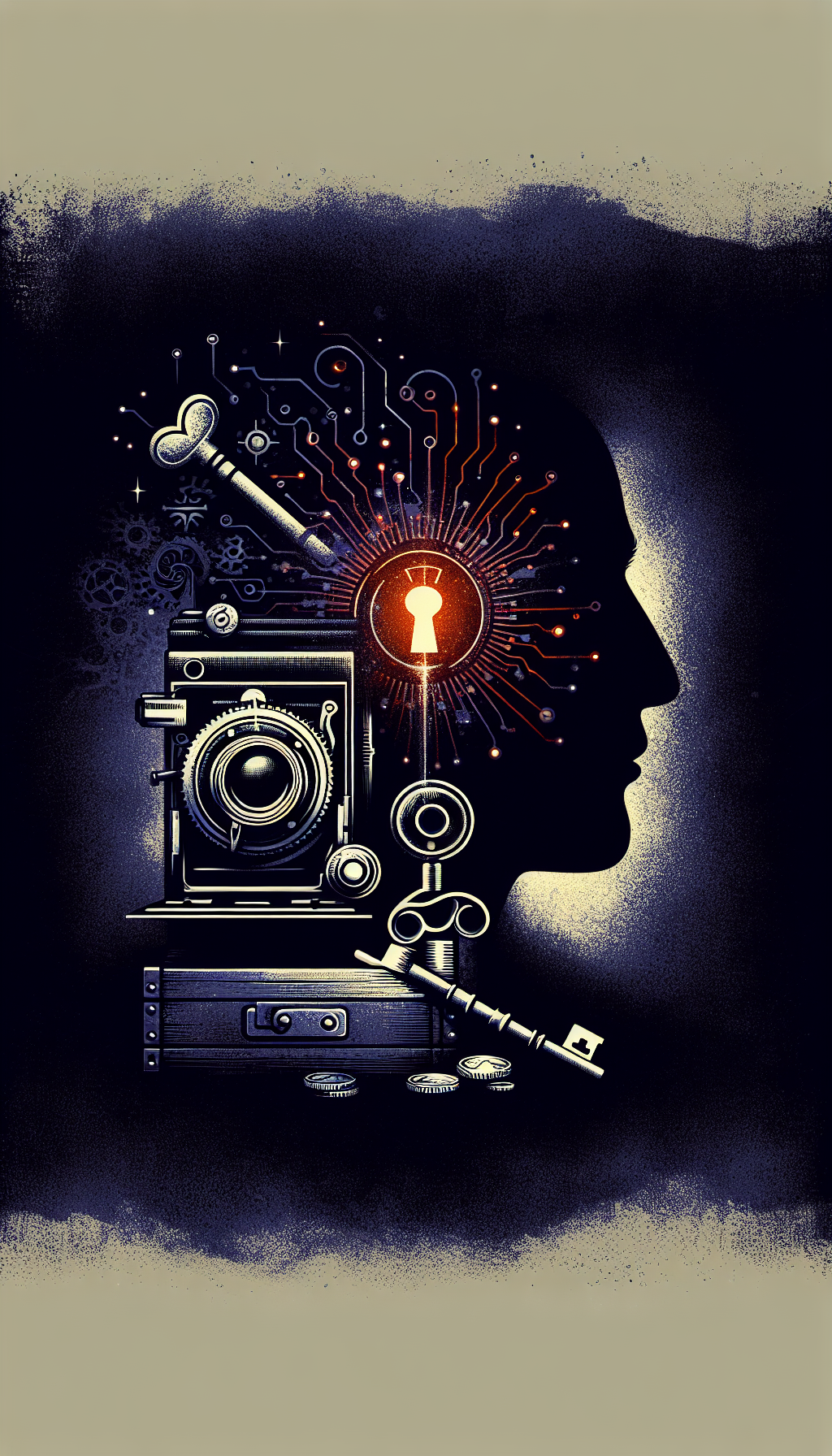Many people have old books tucked away in attics, inherited from relatives, or discovered at estate sales. But determining whether these books hold significant monetary value can be challenging. This comprehensive guide will walk you through everything you need to know about valuing old books, from identifying valuable editions to finding the right markets for selling them.
Understanding Book Value Fundamentals
The value of an old book is not simply determined by its age. Many older books have little monetary value despite their age, while some relatively recent books can be worth thousands. Understanding what makes certain books valuable is the first step in assessing your collection.
Key factors that influence a book’s value include:
- Rarity: Limited print runs, surviving copies, and scarcity in the marketplace
- Condition: Physical state, completeness, and preservation quality
- Demand: Collector interest and cultural/historical significance
- Edition: First editions, limited editions, or special printings
- Provenance: Previous ownership history and authentication
Book Collecting Statistics
Identifying Valuable Book Characteristics
First Editions and Early Printings
First editions of important literary works often command the highest prices. Look for:
- The words “First Edition,” “First Printing,” or “First Published” on the copyright page
- Absence of additional printing numbers (no mention of “Second Printing,” etc.)
- Copyright date that matches the publication date
- Publisher’s original price on the dust jacket (if present)
For many publishers, a number line (such as “10 9 8 7 6 5 4 3 2 1”) at the bottom of the copyright page indicates the printing. If the “1” is present, it’s typically a first printing.
Author Signatures and Inscriptions
Books signed by the author typically increase in value, especially when:
- The signature is authentic (not a printed facsimile)
- The book is inscribed to a specific person rather than simply signed
- The author is significant or has since passed away
- The signature is accompanied by a date near the time of publication
Limited Editions and Special Printings
Books produced in limited quantities or with special features often have higher value:
- Numbered editions (e.g., “121 of 500”)
- Special binding materials (leather, vellum, silk)
- Hand-colored illustrations or special plates
- Association copies (books owned by someone significant)
Book Condition Assessment
Check applicable items to evaluate your book's condition
- Complete dust jacket in good condition
- No writing, highlighting, or underlining
- Binding is tight with no loose pages
- No water damage, stains, or foxing
- Pages are clean and bright
- Corners are sharp, not bumped or frayed
- Spine is straight with clear lettering
- No library markings or ex-library stamps
The Impact of Condition on Book Value
The book collecting world uses specific terminology to describe condition, ranging from “Fine” (nearly perfect) to “Poor” (severely damaged but still complete). Understanding these grades helps in both buying and selling rare books.
Standard Book Condition Grades
- Fine (F or FN): The book appears new and unread, with no flaws.
- Near Fine (NF): Close to fine but with minor imperfections.
- Very Good (VG): Shows some signs of wear but no major defects.
- Good (G): Average used book with all pages present but may have noticeable wear.
- Fair (F): Worn and possibly missing endpapers or with significant damage.
- Poor (P): Severely damaged but complete text block.
For books with dust jackets, the condition of both the book and the jacket should be noted separately, as a pristine jacket can significantly increase value.
Condition Impact on Book Values
How condition affects the price of collectible books
</tbody>
</table>
Common condition issues that decrease value include:
- Missing or damaged dust jackets
- Water damage or staining
- Foxing (brown spots on pages)
- Previous owner’s inscriptions or bookplates
- Library markings or ex-library status
- Broken bindings or loose pages
- Mold or musty odors
Using Reference Guides and Price Databases

Standard Book Value References
One of the most recognized references is Huxford’s Old Book Value Guide, which lists nearly 25,000 titles with their current market values. This guide is particularly useful for:
- Determining approximate retail values for common collectible books
- Finding potential buyers for specific titles
- Understanding which editions command higher prices
However, no single guide is comprehensive, and serious collectors often consult multiple sources.
Online Valuation Resources
The internet has revolutionized book valuation by providing real-time market data:
- AbeBooks: One of the largest online marketplaces for used and rare books, offering price comparison for similar copies.
- Biblio: Specializes in rare and out-of-print books with detailed condition descriptions.
- BookFinder: Aggregates listings from multiple sellers to show price ranges for specific titles.
- Rare Book Hub: Provides auction records for rare book sales, showing actual prices realized.
When using these resources, remember to compare books in similar condition and with similar characteristics to your copy.
Evolution of Book Collecting and Valuation
- Pre-1900
Early Book Collecting
Focus on illuminated manuscripts and incunabula (books printed before 1501). Values based primarily on rarity and historical significance. - 1900-1950
Rise of Modern First Editions
Collectors began focusing on first editions of contemporary authors. First specialized price guides appear. - 1950-1980
Established Valuation Systems
Development of standardized condition grading and publication of comprehensive price guides like Huxford's. - 1980-2000
Auction House Dominance
Major auction houses become primary market-makers for high-value rare books. Records of sales become important reference points. - 2000-Present
Digital Revolution
Online marketplaces and databases provide real-time pricing data. Access to information democratizes book collecting and valuation.
Specialized Categories with Higher Value Potential
Children’s Books
Collectible children’s books can be surprisingly valuable, particularly:
- First editions of classic titles (Alice in Wonderland, Winnie the Pooh)
- Books with illustrations by renowned artists
- Well-preserved copies with original dust jackets
- Books that were often damaged through use (making well-preserved copies rare)
Illustrated and Fine Press Books
Books with significant artistic elements often have value beyond their textual content:
- Limited editions with original artwork
- Books with hand-colored plates
- Fine press books with exceptional typography and design
- Artist’s books created as works of art in book form
Antiquarian Books (Pre-1800)
The oldest books in your collection may have significant value based on:
- Historical importance and influence
- Early printing techniques and materials
- Scientific or intellectual breakthroughs
- Maps, illustrations, or engravings
Modern First Editions
For books published in the 20th and 21st centuries, collectors focus on:
- First editions of important literary works
- Books that won major prizes (Pulitzer, Nobel, Booker)
- Author-signed copies, especially from notable authors
- Advance reading copies and uncorrected proofs

Notable Rare Book Auction Results
Recent sales of exceptional rare books
| Category | Price | Notes |
|---|---|---|
| Fine with Fine dust jacket | 100% of guide value | Book appears new and unread |
| Very Good | 50-80% of guide value | Shows some wear but no major defects |
| Good | 30-50% of guide value | Average used condition with wear |
| Fair or Poor | 10-30% of guide value | Significant damage or missing elements |
</tbody>
</table>
Getting Professional Appraisals
When to Seek Professional Appraisal
Consider professional appraisal services when:
- You have a book you believe may be exceptionally valuable
- You need documentation for insurance or estate purposes
- You’re planning to sell a significant collection
- You’ve inherited books and have little knowledge of their value
Finding Qualified Appraisers
Not all book appraisers are equally qualified. Look for:
- Members of the Antiquarian Booksellers Association of America (ABAA)
- Appraisers certified by the International Society of Appraisers (ISA)
- Established rare book dealers with specialization in your book’s category
- Auction house specialists for very high-value items
Many professional appraisers charge by the hour or by the item, with costs typically ranging from $75 to $200 per hour or $25 to $75 per item depending on complexity.
Selling Your Valuable Books
Online Marketplaces
For books valued under $1,000, online marketplaces often provide the widest audience:
- AbeBooks: Specializes in rare and collectible books
- eBay: Reaches a large audience through auctions
- Amazon: Good for more common collectibles
- Biblio: Focuses on serious book collectors
When selling online, detailed condition descriptions and multiple high-quality photographs are essential.
Auction Houses
For books valued over $1,000 or special collections, auction houses may offer better results:
- Major Auction Houses: Christie’s, Sotheby’s, and Bonhams handle high-value rare books
- Specialty Book Auction Houses: Heritage Auctions, PBA Galleries, and Swann Galleries specialize in books
- Regional Auction Houses: May be appropriate for books of regional interest
Auction houses typically charge seller’s commissions of 10-20% of the hammer price.
Rare Book Dealers
Selling directly to established rare book dealers offers convenience but typically lower prices:
- Dealers must buy at wholesale prices to make a profit on resale
- You may receive 30-50% of retail value
- The process is usually faster and simpler than other methods
- Dealers often buy entire collections, not just select items
Library and Institutional Sales
For historically significant books, consider approaching:
- University special collections departments
- Historical societies related to your book’s subject matter
- Museum libraries with relevant specialties
Institutional sales may offer tax advantages for donations or partial donations/sales.
Common Questions About Old Book Values
How do I know if my old book is valuable?
To determine if your old book has significant value, check for these key indicators:
- First edition status (look for "First Edition" or "First Printing" on the copyright page)
- Author signature or personal inscription
- Limited edition numbering (e.g., "45 of 500")
- Excellent physical condition with intact dust jacket
- Historical significance or cultural importance
- Rarity in the current marketplace
No single factor determines value—it’s the combination of these elements that creates a valuable collectible book. For an initial assessment, you can search for similar copies on AbeBooks.com or other online book marketplaces to see asking prices for comparable items.
What is the app that can value old books?
While there isn't a single app that can accurately value all old books, several online platforms can help you estimate value:
- AbeBooks: Not an app specifically, but their website allows you to search for similar copies and see current asking prices
- BookScouter: Primarily for textbooks but can give general value ranges for some books
- Biblio: Their website shows current market prices for rare and collectible books
For formal appraisals, these digital tools should be considered starting points rather than definitive valuations. As AbeBooks notes, "if you really need a documented estimate of a book’s value for probate or insurance purposes, then visit your local rare bookshop and pay for a formal appraisal."
How do I find the value of old books near me?
To find the value of old books locally:
- Visit specialized rare bookshops in your area that offer appraisal services
- Check with your local library as many have reference librarians knowledgeable about book values
- Contact antiquarian bookseller associations like the ABAA (Antiquarian Booksellers Association of America), which has a "Find Member Bookseller" feature on their website to locate dealers near you
- Attend book fairs where multiple dealers can examine your books
- Check with auction houses in your region that specialize in books and paper ephemera
Local experts often have knowledge of regional publications that might have special value in your area, which online resources might miss.
Is Huxford's Old Book Value Guide still relevant?
Huxford's Old Book Value Guide remains a useful reference for many collectors, though with some limitations:
- It provides retail values for nearly 25,000 titles, making it comprehensive for many common collectible books
- The guide is particularly helpful for identifying which editions of specific titles have value
- However, like all printed price guides, it can become outdated as market values fluctuate
For the most current valuations, Huxford’s should be used in conjunction with online resources that show real-time market data. The guide is most valuable for its comprehensive coverage of titles rather than for precise current values.
What makes a book valuable besides its age?
Many factors beyond age determine a book's value:
- Rarity: Limited print runs or few surviving copies
- Demand: Collector interest and cultural significance
- Condition: Physical state and completeness
- Edition: First editions or special printings
- Provenance: History of ownership
- Inscriptions: Author signatures or notable owner marks
- Illustrations: Quality and significance of artwork
- Historical Importance: Influence on literature, science, or culture
In fact, some relatively recent books (like first editions of Harry Potter) can be worth more than many 200-year-old volumes that were printed in large quantities and have limited collector interest.
How important is a dust jacket to book value?
Dust jackets can dramatically impact a book's value, often accounting for 80% or more of the total value for modern first editions. For example:
- A first edition of F. Scott Fitzgerald’s "The Great Gatsby" (1925) without dust jacket might sell for $5,000-$8,000
- The same book with an intact original dust jacket could command $100,000-$150,000
Dust jackets were originally considered disposable packaging, so many were discarded, making surviving examples rare. For books published after 1920, collectors strongly prefer copies with original dust jackets in good condition.
Preserving Your Valuable Books
Storage Recommendations
- Store books upright on shelves, not stacked
- Maintain consistent temperature (65-70°F) and humidity (30-50%)
- Keep books away from direct sunlight
- Use acid-free archival boxes for fragile items
- Avoid storing books in attics, basements, or garages
- Use bookends to prevent leaning and spine damage
Handling Guidelines
- Wash hands before handling rare books
- Support the book’s structure when opening
- Never force a book open beyond its natural opening angle
- Use acid-free paper bookmarks, not adhesive notes
- Never use tape or adhesives for repairs
- Consider cotton gloves for particularly valuable items
Protective Measures
- Use archival-quality Mylar dust jacket protectors
- Consider custom-made clamshell boxes for very valuable books
- For leather-bound books, apply appropriate leather conditioner once yearly
- Keep detailed inventory records including photographs
Proper preservation not only maintains value but also ensures these cultural artifacts survive for future generations.
Essential Book Valuation Resources
AbeBooks Book Values Guide
Comprehensive resource for finding the value of used, rare, and out-of-print books, with links to their marketplace where you can compare prices of similar copies.
Biblio Book Value Information
Provides information on evaluating book values and offers a marketplace of rare and collectible books for price comparison.
Library of Congress - How Much is My Book Worth?
Official guidance from the Library of Congress on evaluating rare books and finding qualified appraisers.
Enoch Pratt Free Library - Evaluating Old Books
Excellent reference guide from a major library with resources for determining book values and finding appraisers.
Antiquarian Booksellers Association of America
Professional organization for rare book dealers with a searchable database to find qualified appraisers and dealers in your area.
What's an Old Book Worth? (Medium Article)
Informative article explaining the basics of book valuation for beginners with practical examples.
MF Libra - How to Determine the Value of an Antique Book
Detailed guide covering the key factors that influence antique book values with examples of valuable characteristics.
Huxford's Old Book Value Guide (Amazon)
Purchase link for one of the most comprehensive printed reference guides for old book values, covering nearly 25,000 titles.
Conclusion
Valuing old books requires knowledge, research, and sometimes professional assistance. While not every old book is valuable, those with the right combination of rarity, condition, and demand can be worth substantial sums. Whether you’re a collector, seller, or have inherited old books, understanding these valuation principles will help you make informed decisions.
Remember that the book market, like all collectibles markets, changes over time. Values can increase or decrease based on collecting trends, cultural shifts, and economic factors. Regular research and consultation with current resources will ensure you have the most accurate information about your books’ worth.
By taking the time to properly identify, evaluate, and care for your books, you’ll be prepared to make the most of your collection whether you choose to sell now or preserve these treasures for the future.
Get a Professional Appraisal
Unsure about your item’s value? Our certified experts provide fast, written appraisals you can trust.
- Expert report with photos and comps
- Fast turnaround
- Fixed, upfront pricing
No obligation. Secure upload.
| Item | Price | Date | Auction House |
|---|---|---|---|
| First Folio (Shakespeare) | $9.98 million | October 2020 | Christie's |
| Birds of America (Audubon) | $7.9 million | December 2010 | Sotheby's |
| First Edition Harry Potter (J.K. Rowling) | $471,000 | December 2021 | Heritage Auctions |
| Signed Great Gatsby (F. Scott Fitzgerald) | $228,000 | June 2020 | Christie's |




